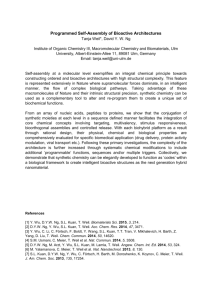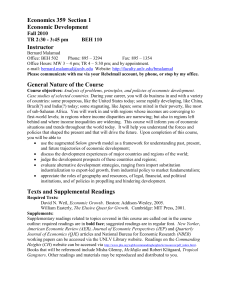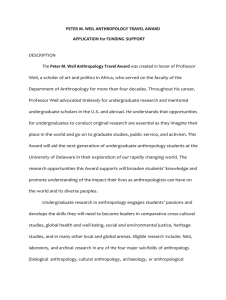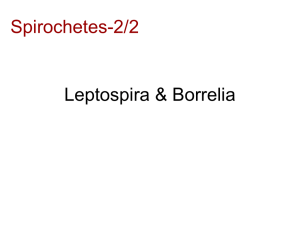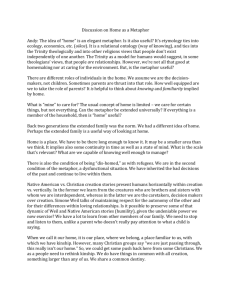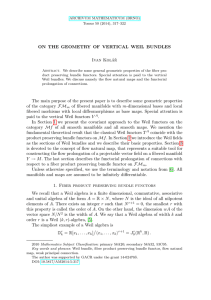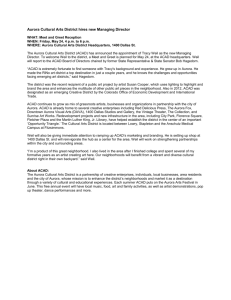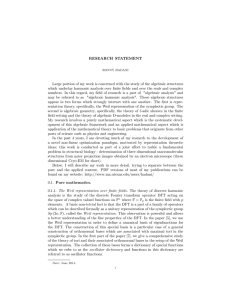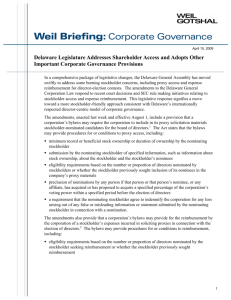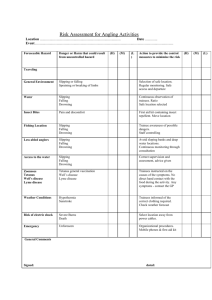READING LIST FOR ECONOMIC GROWTH COURSE: FALL 2012
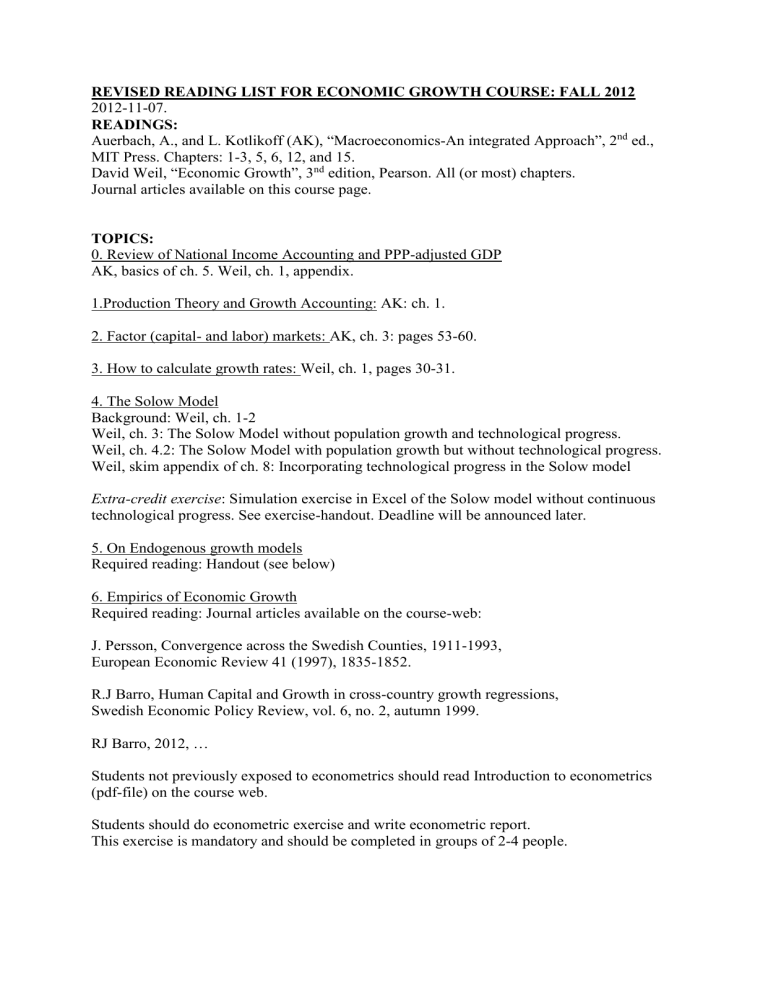
REVISED READING LIST FOR ECONOMIC GROWTH COURSE: FALL 2012
2012-11-07.
READINGS:
Auerbach, A., and L. Kotlikoff (AK), “Macroeconomics-An integrated Approach”, 2 nd
ed.,
MIT Press. Chapters: 1-3, 5, 6, 12, and 15.
David Weil, “Economic Growth”, 3 nd
edition, Pearson. All (or most) chapters.
Journal articles available on this course page.
TOPICS:
0. Review of National Income Accounting and PPP-adjusted GDP
AK, basics of ch. 5. Weil, ch. 1, appendix.
1.Production Theory and Growth Accounting: AK: ch. 1.
2. Factor (capital- and labor) markets: AK, ch. 3: pages 53-60.
3. How to calculate growth rates: Weil, ch. 1, pages 30-31.
4. The Solow Model
Background: Weil, ch. 1-2
Weil, ch. 3: The Solow Model without population growth and technological progress.
Weil, ch. 4.2: The Solow Model with population growth but without technological progress.
Weil, skim appendix of ch. 8: Incorporating technological progress in the Solow model
Extra-credit exercise : Simulation exercise in Excel of the Solow model without continuous technological progress. See exercise-handout. Deadline will be announced later.
5. On Endogenous growth models
Required reading: Handout (see below)
6. Empirics of Economic Growth
Required reading: Journal articles available on the course-web:
J. Persson, Convergence across the Swedish Counties, 1911-1993,
European Economic Review 41 (1997), 1835-1852.
R.J Barro, Human Capital and Growth in cross-country growth regressions,
Swedish Economic Policy Review, vol. 6, no. 2, autumn 1999.
RJ Barro, 2012, …
Students not previously exposed to econometrics should read Introduction to econometrics
(pdf-file) on the course web.
Students should do econometric exercise and write econometric report.
This exercise is mandatory and should be completed in groups of 2-4 people.
7. The overlapping generation model (OLG) for a closed economy with no government
A. Optimal consumption, and saving by a young person: AK: chapter 2.
B. More in-depth analysis of the choices of the household:
Regarding saving the household may receive income in the last period of life as well, and may choose the number of hours it want to work in both periods of life.
Required reading: Handout (see below).
Extra-credit exercise : Saving and labor-supply-exercise to be handed in for extra credit.
C. Completing the closed-economy OLG-model: AK, Ch. 3
D. Allowing for population growth in this model: AK, appendix to ch.3.
8. Income distribution and Economic Growth.
R J Barro, Inequality and Growth in a Panel of Countries, Journal of Economic Growth, 5: 5-
32 (March 2000); (chapter 13 in Weil)
9. Factor mobility in the OLG-model: An analysis of globalization: AK, ch. 12,basics of ch. 5.
10. A government sector in the OLG-model: AK, chapter 6;
11. Precautionary saving in the OLG-model: AK, ch.15 (pp. 411-423): Handout below;
12. Political economy models, chapter from other textbook (Nicholson).
13. Fertility Choice and The Income level.
Reading: handout below. Weil, ch. 4-5.
During the latter part of the course we study more applied topics:
The topics chosen are based on the chapters in Weil.
The topics are covered by in-class student presentations.
Example of topics:
14. Economic growth and openness. Chapter 11 in Weil.
15. Economic growth and the government. Chapter 12 in Weil.
16. Economic growth and Culture. Chapter 14 in Weil.
17. Economic growth and Geography. Chapter 15 in Weil.
18. Resources and the Environment at the Global Level. Ch. 16 in Weil.
Etc.
